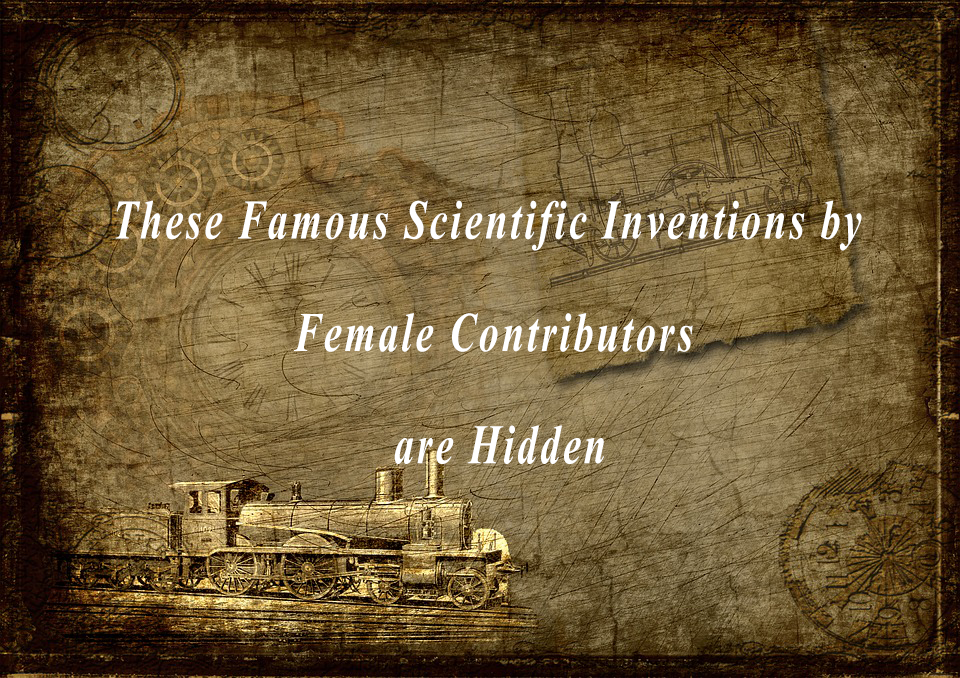In history, few women participated to made great inventions and discoveries. This raised a misconception that only a few women had contributed to the science but the truth is callous. Many discoveries by women robbed by men not known yet and hidden in this male-dominated society. This Scientific fact is here with some significant developments.
Replica Plating
Replica Plating belongs to the same scientist, who discovered Lambda Bacteriophage-infect bacteria, and former is a significant scientific discovery. Esther’s husband, Joshua Lederberg worked with her to see Lambda Plating by process of transferring colonies of bacteria through one Petri dish to another. Later, this study contributed to the development of a survey of antibiotic resistance.
Joshua Lederberg received Noble Prize in 1958 for the Replica Plating discovery for medicine of physiology and shared with Edward Tatum and George Beadle.
DNA Structure
Francis Crick in 1962, with the help of Maurice Wilkins and James Watson, discovered DNA structure and got a noble prize for this scientific presentation.
Rosalind Franklin in Britain worked integrally in the DNA discovery, and her observations worked critically for James and Crick. Only four years before, when her fellows got the award, she passed away. Unfortunately, her fellows used her observations and left her results un-identified with the statement of no significant performance for this achievement.
Later, a study on her history of career revealed that her mind-blowing scientific observations would not get any reward, even if she were alive.
Nuclear Fission
For the Nuclear Fission discovery, research of Lise Meitner was instrumental, and this laid the basis for the atomic bomb discovery.
Meitner, upon completion of her doctoral degree from Vienna University, moved to Berlin in 1907 and worked there with Otto Hahn chemist.
He conducted experiments on the evidence of atomic bomb to get the idea clear and some scientific support. He didn’t give the complete explanation, and Meitner provided the theory for this concept.
In 1944, Hahn got noble Prize in chemistry for the nuclear fission contributions, but Meitner stayed un-identified.
Law of Disparity-disproved
Chien-Shiung Wu in 1940s proclaimed best experimental physicist. For the Manhattan Project at Columbia University, she was recruited and for the Uranium Enrichment and Radiation Detection researches.
Other theoretical physicists, Chen Ning Yang and Tsung-Dao Lee got Wu’s aid to the disproving law of disparity because Wu conducted experiments with the use of Cobalt-60, a radioactive kind of cobalt metal used to disprove the law.
It was a milestone and awarded Noble Prize in 1957 but to Chen Ning Yang and Tsung-Dao Lee, not to Chien Shiung Wu, despite her critical scientific observations.
Period-Luminosity Relationship
Henrietta Leavitt contributed many studies of the universe. Her work was done in the laboratories of Harvard University where she worked under superiors and supervisors for cataloging stars.
Leavitt, upon her work, found out an association between the brightness of a star and its Earth distance and this lead the foundation of Period-Luminosity Relationship. Edward Hubble and Harlow Shapley were great astronomers, and they used this theory for their scientific work.
Unfortunately, this well deserved female left unidentified and director of Harvard denied granting her. Mittas Leffler in 1926 got Noble Prize after she passed away.
Sex Determination
Sex determination by X & Y chromosome; a well-known method presented by Thomas Morgan was presented by a female Nettie Stevens. On Mealworms, she conducted experiments to get findings and Morgan worked with her and almost all valuable observations made by her claimed by Morgan, and he established Noble Prize, at last.
Pulsars
Jocelyn Bell Burnell in 1967 identified Pulsars when he was a student at Cambridge University of England.
Pulsar is a Pulsating Radio Star, a strongly magnetized element with a fast rotating neutron star with the emission of radio waves regular pulses and electromagnetic radiation beam.
Later, this remarkable finding won Noble Prize and got a Physics Award in 1974. This significant achievement was alternatively given to the Anthony Hewish, supervisor of Burnell and Martin Ryle, a radio astronomer at the same University.
Stars Composition
Cecilia Payne stars composition and elements that made it. Henry Norris Russell was her supervisor, advised for not publishing this information for this subject matter is near to reject and far different from standard theories of knowledge.
Out of the ordinary, he published same after four years when he discovered the sun composition and particles. For this scientific discovery, he got complete credit and Payne, and Henry Norris Russell awarded the astronomy contributions.
Orbiting Speed of Stars
According to Rubin, galaxies, outer parts contain an orbiting speed which is same as the central part’s galaxy stars. By that time, it seemed an abnormal observation because people believed that at most massy place strong gravitational force exists and it reduced as we move farther from it.
Fritz Zwicky, in her hypothesis, put forward that with the help of an invisible dark matter in the universe, orbital stay in their speed limit. 90% filled dark space with the dark matter; she could prove it was ten times more than what was being thought.
Her observations remain denied for many years by her male fellows; despite their firm belief in the same scientific theory.
Nuclear Bombardment & Technetium
Atomic Physics and Chemistry fields know many newer discoveries by Ida Tacke that remained hidden until they rediscovered again. She discovered two elements, masurium 43 and rhenium 75. She received credit for rhenium, but masurium is not in the periodic table with atomic number 43. It is because masurium was later rediscovered by Emilio Segre and Carlo Perrier as technetium.
On Fermi’s theory, she worked and observed that when neutrons bombarded, particles are broken down and release mass-energy. Her male fellows denied her findings continuously, and Fermi got Noble Prize on the production of new radioactive elements when neutron bombardment carried out.







